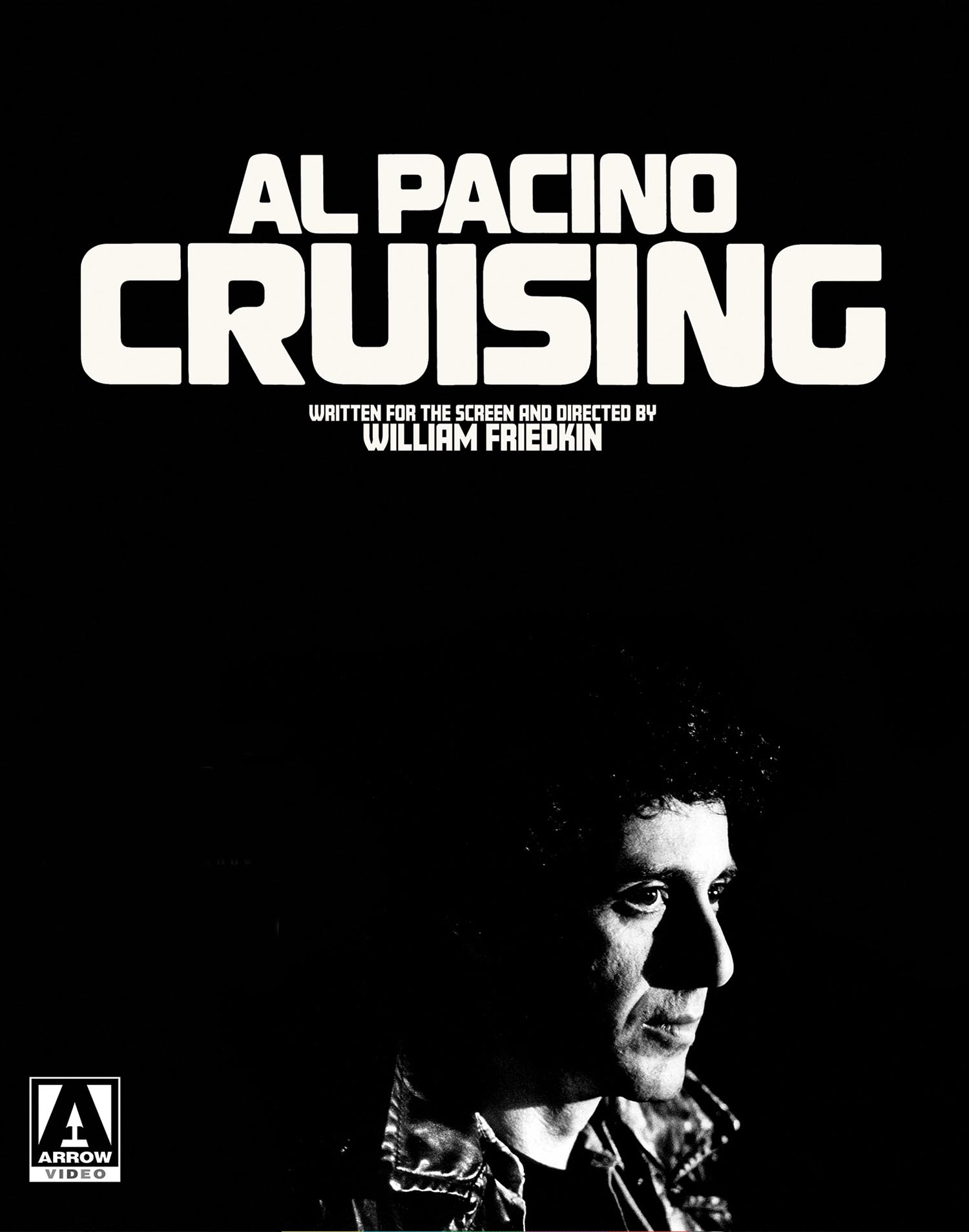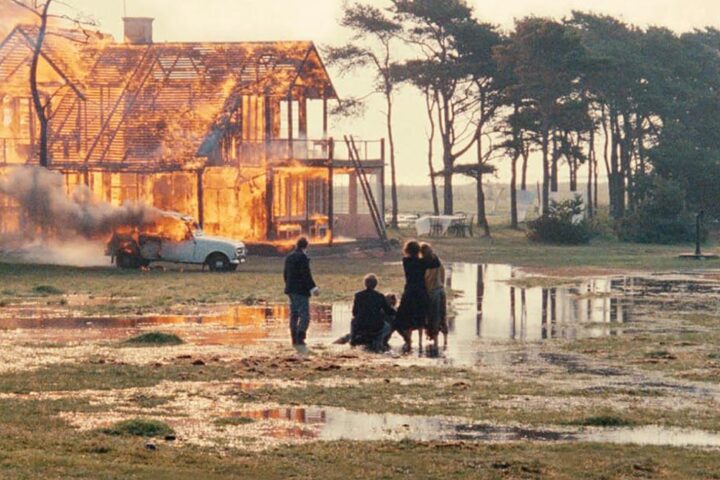 After William Friedkin’s Cruising spent the better part of the aughts as the subject of earnest, if guarded, revisionist critique, how does the film hold up in our current era of representational politics and trigger warnings? And why does it feel like how you answer that question will determine which side pocket you keep your handkerchief in?
After William Friedkin’s Cruising spent the better part of the aughts as the subject of earnest, if guarded, revisionist critique, how does the film hold up in our current era of representational politics and trigger warnings? And why does it feel like how you answer that question will determine which side pocket you keep your handkerchief in?
The gay side of Film Twitter had previously treated Friedkin’s 1980 ode to fisting, frottage, and flash cuts with a level of curiosity nearly equal to the fury of the disco era’s gay community. What currency could an undercover police officer’s punk-disco battle with the monsters in his closet possibly have when held against the ironic sense that an avowed sexual assaulter with a fondness for golden showers will soon be the one to usher in a rollback of LGBT gains at every level? But in its day, Cruising was essentially accused of sanctioning gay murder in the same sense that Brian De Palma’s Dressed to Kill was thought to justify rape. (De Palma had initially considered adapting Cruising before apparently realizing how much he would rather work in his element: high heels, venereal disease, and Park Avenue whores.)
But at least Friedkin and Warner Bros. thought to tack on a defensive statement before Cruising (at least during its original run) that read “This film is not intended as an indictment of the homosexual world,” which admittedly proves they knew exactly how thin a line they were skirting. It’s still fascinating to weigh the film’s still-volatile reputation against the current political climate—as well as the current state of gay cinema.
For all its bad judgment, questionable portrayals, and arrogant artsploitation aims, Cruising is what Brokeback Mountain and all but a small handful of eternally rewarding fringe gay movies (Stranger by the Lake, In a Year of 13 Moons, most everything by Tsai Ming-liang) are not: an interesting film. If its homophobia is also in contrast with Brokeback Mountain’s purported lack of it, well, no one said art (or even faux-art) went down easy. Just ask John Waters, who put the words “the life of a heterosexual is a sick and boring lifestyle” into the snaggle-toothed mouth of Edith Massey years before Cruising got so many dicks bent out of shape.
Cruising, based on a 1970 Gerald Walker book inspired by a series of murders that would in later years be classified as hate crimes, had to answer for a lot of unfair expectations. Chief among those is the burden of being one of the first major studio pictures to present gay sexuality on screen—as opposed to the more innocuous gay “identities” of the characters from Mart Crowley’s play The Boys in the Band and its Friedkin adaptation from 1970.
Firsts are always in some measure definitive, and the reservations of those who weren’t portrayed accurately by Cruising are understandable in light of the film’s implication that every gay male in the tri-state area fell into three groups: leather daddies packing cans of Crisco, mincing transsexual snitches, or sweet-natured artistic eunuchs caught in between, doomed—because of their unwillingness to fly their freak flag—to spend their existence in solitude. (I left out a fourth archetype, but since that would be the predatory murderer demographic, I don’t imagine including that to pump up the diversity quotient would appease Cruising’s detractors.)
Some of the film’s objectionable presuppositions can be dismissed, others not. In the former camp is the notion that the adjustment of the sexual alignment of Steve Burns (Al Pacino) emerges from having spent a few nights pumping his arms on the grimy dance floors of the S&M clubs. He frequently rushes back from his stakeout apartment on Christopher Street to have sex with his girlfriend, Nancy (Karen Allen). As the film goes on, he appears to engage in increasingly rougher sex, and at one point seems to need to hear that no-wave beat in his head to get in the mood with her. While to some this is a flagrant demonstration of the insidious, seductive allure of homosexuality that’s passed like vampirism, I think Friedkin’s scenario is far more interested in examining the fragility of undercover policemen’s identity.
That Steve’s crisis is held against the idea that homosexuals could be as traditionally macho as heterosexuals is almost accidentally serendipitous, at least as far as the plot is concerned. It’s not necessarily Friedkin’s fault that a few gay men took the baton of that newfound machismo and shoved it too far. A tad less forgivable on Friedkin’s part, though, is the outcome of Steve’s crisis (which is probably about as much worth a spoiler alert as is the theory that AIDS may have been contracted among some members of the film’s cast, and on camera at that).
Much as Friedkin tries to put a cute question mark on his coda a la The French Connection, you’d have to be pretty desperate for ambiguity to not assume Steve ends up knifing the one gay man he could have brought himself to love. Now, I’m as squeamish over the mechanisms of fisting as the next guy, but it’s hard to imagine any sane non-fundie with half a wit could reason that all acts of male-on-male penetration are equal, be they consensual or homicidal.
The politics of homosexuality in America are in a continuous wrestling match with the societal standards of heterosexuality. Every policy, every attitude, every lifestyle choice is made in reaction to the standard of hetero monogamy. The still new wrinkle of legalized same-sex marriage only served to heighten the internal debate among LGBT activists, some of whom fear gays will forget about all other subjugated rights intended them by our nation’s forefathers so long as they now get to thrash the springs of their marital beds, that sex between two men (or two women, though you wouldn’t know it even exists listening to media talking points) would be dirty until the act of filing taxes jointly validated it for everyone.
Does the queasy canonization of Cruising at this moment when political correctness is on its deathbed have more impact from a cultural standpoint than it does from an aesthetic one? Unquestionably. No matter what any number of critics will tell you, the aesthetic values of re-released films are rendered negligible by their cachet as time capsules. In that sense, the appalling horror some may glean from Cruising isn’t its cold, clinical efficiency as both a thriller and a queer-baiting manifesto of hate. Its truly unnerving quality is that its existence is a brutal reminder from the past that homosexuality isn’t heterosexuality, and that any attempt to reconcile the difference will only breed resentment, confusion, and violence. Or perhaps it will only lead to more lame Hallmark movies of the week like Love, Simon.
Image/Sound
Much like in Martin Scorsese’s Taxi Driver, minus the rush of blurry, neon-lit impressionism, the look of Cruising walks a fine line between precision and sleaze, and if there’s a downside the brand new 4K restoration of the film from the original 35mm camera negative, it’s that it errs to the side of too enthusiastically cleaning up images that beg to remain grimy and wet. It’s not quite shaved to the skin, but it’s often a pretty tight, tidy landing strip.
At the same time, Cruising practically trips over itself in presenting topics, scenes, and settings in a mainstream film that had rarely been given such prominence before, so maybe the vaguely over-lit nature is actually truer to the film’s true character. In any case, it’s frequently shiny as an undercover cop’s fresh Schott Perfecto motorcycle jacket. And it’s even still outclassed by the, as critic Mark Kermode calls it, “tactile” sound presentation, with every creak of leather, every rattle of the handcuffs, every murmur of Jack Nitzsche’s moody score enveloping viewers like the crescendos of a particularly well-done popper training video.
Extras
Normally, cruisers would scoff at returning to the same well twice, but there’s nothing to sneeze at about the extras from Arrow’s prior Blu-ray release, which itself ported over extras from the Warner DVD edition. The commentary track by William Friedkin and Mark Kermode all but renders the old solo commentary track by Friedkin redundant. Friedkin repeats a lot of the same observations and anecdotes in the newer track, but Kermode smartly steers the conversation in new directions. Among some of the most eye-opening tidbits, Cruising was at one time earlier in the ’70s earmarked as a project for Steven Spielberg. Talk about close encounters.
New to this edition is a third commentary track featuring original musicians involved with the soundtrack, and the greatest compliment that I can pay to it is that it may leave you feeling as the final product isn’t as confused and contradictory as it may seem. Also new here is an interview with actress Karen Allen; an interview with former American NYPD detective Randy Jurgensen, who inspired the Al Pacino’s character in the film; and a visual essay surrounding the hanky code featuring actor and writer David McGillivray.
More clear-eyed of the set’s recycled extras are the two featurettes directed by Laurent Bouzereau, which detail both the production’s technical aspects as well as the controversy it’s existed within ever since it’s inception. Putting a nice set of aviators atop the package is a 120-page book featuring articles from The Village Voice and The New York Times, essays from the film’s extras cast, an introduction from Friedkin, and an archive interview with Pacino.
Overall
Time may have been surprisingly kind to Cruising, but that’s at least in part because it’s also been agonizingly slow to be kind to the LGBT community.
Since 2001, we've brought you uncompromising, candid takes on the world of film, music, television, video games, theater, and more. Independently owned and operated publications like Slant have been hit hard in recent years, but we’re committed to keeping our content free and accessible—meaning no paywalls or fees.
If you like what we do, please consider subscribing to our Patreon or making a donation.





